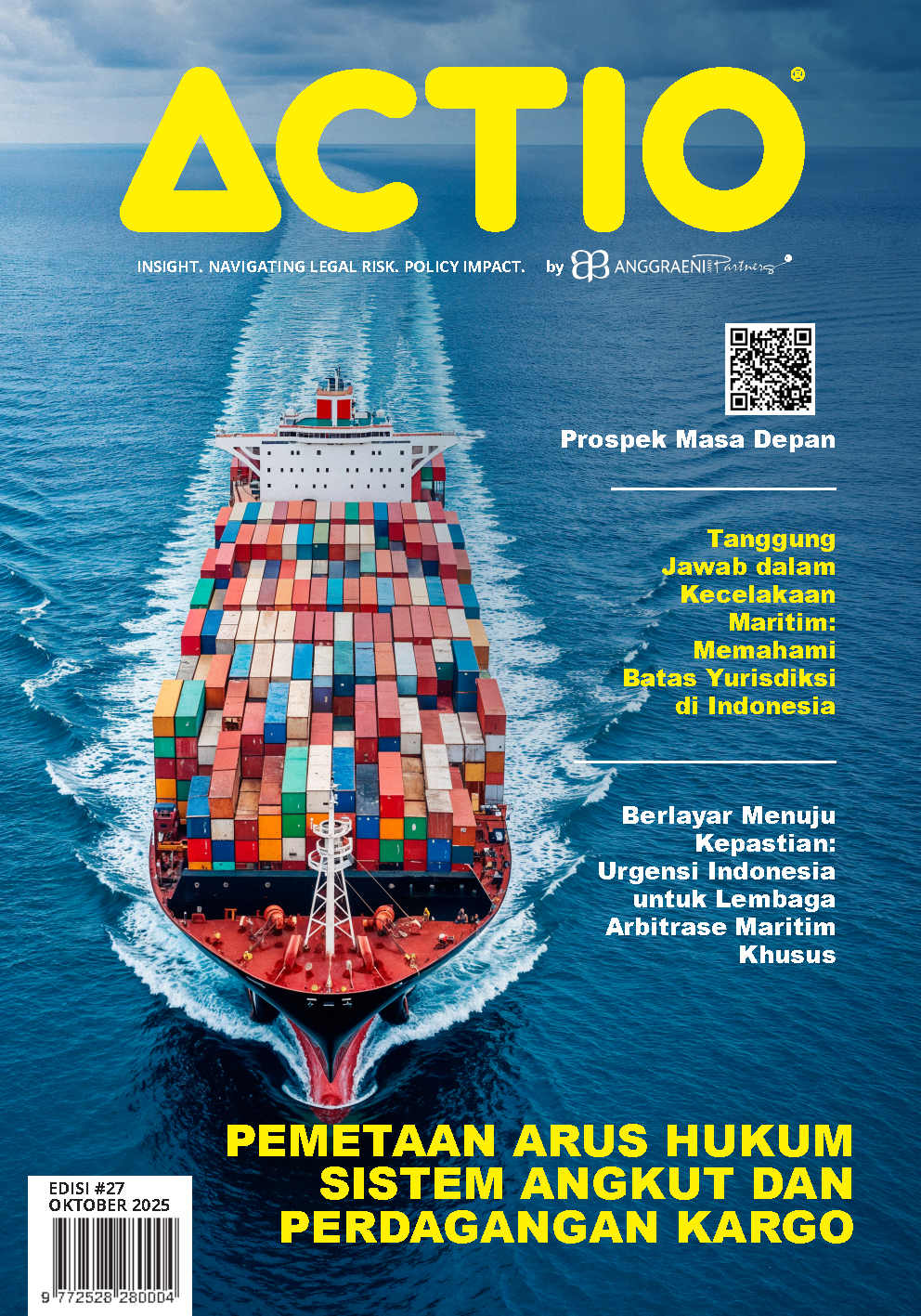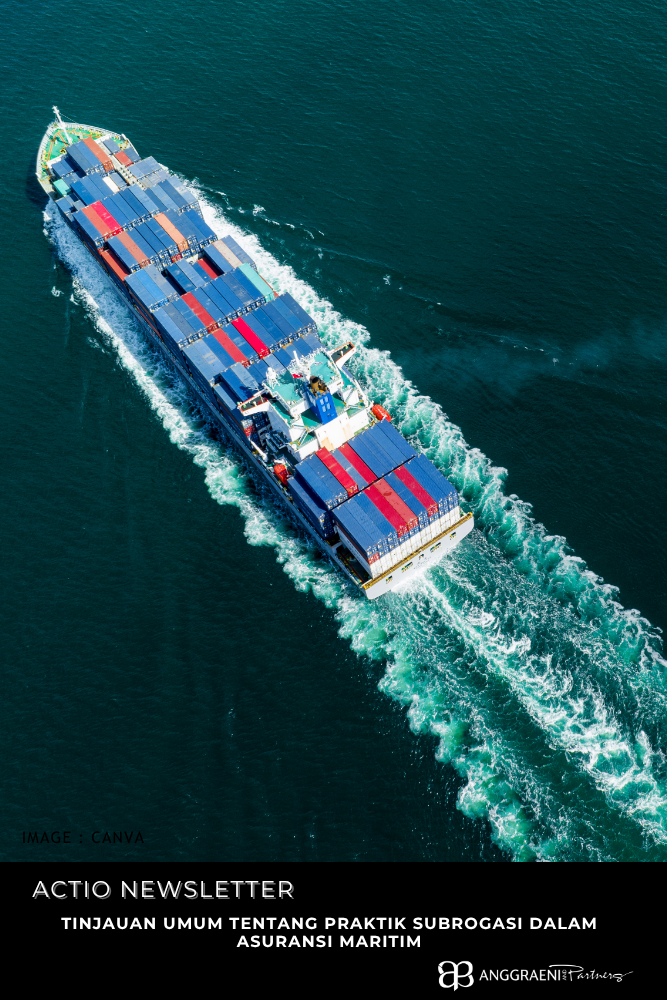The Double-Edged Sword: Is Vessel Monitoring System Liberating Indonesian Fisherfolks?
by Setyawati Fitranggraeni, Alicia Daphne Anugerah, Orima Melati Davey, Tiyana Sigi Pertiwi
1. Overview
As the world races toward a technological future, the fishermen of archipelagic Indonesia are the enduring guardians of its national wealth. Whilst the core activity of fishermen is to catch or harvest fish, the reliance on the ocean natural resources work hand-in-hand with technological advancement. With approximately 3 million fishermen,[1] Indonesia is also urged to incorporate technological aspect in the process of fish catching for the fishermen. In 2019, through the Ministry of Ocean and Fisheries Regulation Number 10 of 2019 concerning Fisheries Vessel Monitoring System (MoOFR 10/2019), the government mandated the application of Vessel Monitoring Systems (VMS) for fishing vessels over 30 GT.[2] The Ministry of Ocean and Fisheries of Republic of Indonesia (KKP) announced that the application of VMS can offer various benefits both for fishermen and the government.
VMS serves as a monitoring and surveillance system for fishing vessels.[3] A VMS also enhances the safety of fishermen as the VMS operates using satellites .[4] The VMS enhances safety by providing data on the location of the vessel on a real time basis.[5] Beyond the direct benefits to fishermen, the Ministry of Maritime Affairs and Fisheries (KKP) promotes the VMS as a vital tool for enhancing transparency and combating illegal, unreported, and unregulated (IUU) fishing through precise, real-time data.[6]
Despite its many benefits for both the fishermen and the government, the application of VMS is not a one size fits all solution for our fishermen. The substantial financial burden presents a key adoption hurdle, with entry-level VMS devices costing up to 8 million IDR (not including maintenance), the technology is expensive for Indonesia’s small-scale fishing operators.[7] Studies show that the revenue of small-scale fishermen as only 3.000.000-4.000.000 IDR per month.[8] Furthermore, this relatively low monthly revenue is not derived exclusively from fishing, indicating that these fishers must pursue other supplemental activities to sustain their households.[9] This means that the price of the VMS is twice their average monthly earnings and beyond the reach of the smaller-scale fishermen.On the other hand, these fishermen are now forced to comply with the binding regulations if they wish to continue fishing for their livelihood.
2. Existing Law
Initially, MoOFR 10/2019 required that only fishing vessels above 30 GT were required to hold a license in Fisheries Management Area of the Republic of Indonesia (WPPNRI) and therefore needed the VMS.[10] Now , the new Ministry of Ocean and Fisheries Regulation Number 23 of 2021 concerning Operational Standards and Monitoring Systems for Fishing Vessels removed the “30 GT above” clause and mandated “fishing vessels” to use a VMS. Consequently, all fishing vessels, including the vessels of small-scale fishermen are now required to install the VMS. Meanwhile, our small-scale fishermen are already facing tremendous challenges in competing with the larger or mega fishing industry that can catch hundred tons of fishes in one catch. It is important to assess the effect of removing the “30 GT above” wording, now requiring universal use of the VMS on all vessels. There is a risk that such a change could create competitive imbalances, disproportionately affecting small-scale fishermen who operate with different economic scales and capacities than major fisheries corporations.
There is also an inconsistency between the existing regulations concerning VMS. The regulatory framework for VMS is plagued by inconsistency. A direct conflict arises between Government Regulation 11 of 2023 concerning Measured Fish Captures, which exempts small-scale fisheries,[11] and the stricter MoOF Regulation 23/2021, which mandates universal adoption. While the principle of lex superior suggests the government regulation should prevail, the contradictory messaging creates confusion and risks unjustly targeting small-scale fishers caught between two rules.
3. Implementation
While the new regulation represents a positive step forward for the fisheries industry, its direct benefits have yet to be fully enjoyed by all fishermen. Although legal principles exist to ensure certainty, the current regulatory landscape reveals some inconsistencies that require further harmonization. Advocacy groups, such as the People’s Coalition for Fisheries Justice (KIARA), note that more comprehensive socialization and assistance regarding VMS implementation would be beneficial. Reports indicate a degree of uncertainty among fishers regarding their obligations.[12] While the extension for VMS compliance until December 31, 2025, provided by KKP through SE No. 2403/2024 is a positive step, its successful implementation would be greatly enhanced by complementary government support. Addressing the specific concerns of smaller-scale fishermen will be crucial to ensuring a smooth and equitable transition for all stakeholders. Whilst KKP is trying to provide an affordable option of VMS device for smaller-scale fishermen,[13] aligning these policies will be crucial to fully realizing the Ministry’s vision for VMS and ensuring its successful adoption across all sectors, particularly among small-scale fishers.
4. Concluding Remarks
Therefore, a concerted effort towards regulatory coherence, coupled with targeted outreach and support programs, is essential. By clarifying mandates and proactively engaging with fishing communities, the government can bridge the current gap between policy intent and practical implementation. This will ensure that the regulation’s positive potential is fully realized, fostering both sustainable industry growth and equitable outcomes for all fishers.
References
Adisti Regita Ramadani, “Analisis Pendapatan Nelayan di Kecamatan Girisubo Kabupaten Gunungkidul” (2024) Interdisciplinary and Multidisciplinary Studies: Conference Series 2(2), pg. 137; see also Tempo, Pendapatan Nelayan Terus Turun dalam Lima Tahun Terakhir hingga 19,82 Persen < https://www.tempo.co/ekonomi/pendapatan-nelayan-terus-turun-dalam-lima-tahun-terakhir-hingga-19-82-persen-1211935>.
Between Iceland and Indonesia”
CNBC Indonesia, Miris! Nelayan di RI ternyata Masih Miskin https://www.cnbcindonesia.com/research/20240827143701-128-566756/miris-nelayan-di-ri-ternyata-makin-miskin.
Government Regulation 11 of 2023 concerning Measured Fish Captures, Art. 17(3).
KIARA, Ketidakjelasan Penggunaan VMS untuk Nelayan Kecil, KIARA: VMS Akan Mencekik Nelayan Kecil, Menteri Kelautan dan Perikanan Harus Tegas Menjelaskan Melalui Peraturan Sistem Pemantauan Kapal Perikanan! < https://www.kiara.or.id/2025/04/30/ketidakjelasan-penggunaan-vms-untuk-nelayan-kecil-kiara-vms-akan-mencekik-nelayan-kecil-menteri-kelautan-dan-perikanan-harus-tegas-menjelaskan-melalui-peraturan-sistem-pemantauan-kapal-perikanan/>.
Ministry of Ocean and Fisheries Regulation Number 10 of 2019 concerning Fisheries Vessel Monitoring System, Art. 11(1). (“MoOFR”)
MoOFR, Art. 11 (1).
Muhammad Suhendar, “Comparison of Vessel Monitoring System (VMS)
Putu Ristia Amandari, “Vessel Monitoring System (VMS) Technology as a Management Strategy for Longline Tuna Capture Fisheries in Benoa” (2024) Advances in Tropical Biodiversity and Environmental Sciences 8(2), pg. 70.
Siaran Pers Kementerian Kelautan dan Perikanan, Penggunaan VMS Jadi Kunci Keberlanjutan Sumber Daya Ikan, https://www.kkp.go.id/news/news-detail/penggunaan-vms-jadi-kunci-keberlanjutan-sumber-daya-ikan-lRL1.html.
Siaran Pers KKP, KKP Ungkap Alasan Kapal Perikanan Wajib Pasang VMS, < https://kkp.go.id/news/news-detail/kkp-ungkap-alasan-kapal-perikanan-wajib-pasang-vms-pZ26.html>.
Siaran Pers KKP, KKP Ungkap Alasan Kapal Perikanan Wajib Pasang VMS, < https://kkp.go.id/news/news-detail/kkp-ungkap-alasan-kapal-perikanan-wajib-pasang-vms-pZ26.html>.
[1] CNBC Indonesia, Miris! Nelayan di RI ternyata Masih Miskin https://www.cnbcindonesia.com/research/20240827143701-128-566756/miris-nelayan-di-ri-ternyata-makin-miskin.
[2] Ministry of Ocean and Fisheries Regulation Number 10 of 2019 concerning Fisheries Vessel Monitoring System, Art. 11(1). (“MoOFR”)
[3] Muhammad Suhendar, “Comparison of Vessel Monitoring System (VMS)
Between Iceland and Indonesia”
[4] Putu Ristia Amandari, “Vessel Monitoring System (VMS) Technology as a Management Strategy for Longline Tuna Capture Fisheries in Benoa” (2024) Advances in Tropical Biodiversity and Environmental Sciences 8(2), pg. 70.
[5] Ibid.
[6] Siaran Pers Kementerian Kelautan dan Perikanan, Penggunaan VMS Jadi Kunci Keberlanjutan Sumber Daya Ikan, https://www.kkp.go.id/news/news-detail/penggunaan-vms-jadi-kunci-keberlanjutan-sumber-daya-ikan-lRL1.html.
[7] Siaran Pers KKP, KKP Ungkap Alasan Kapal Perikanan Wajib Pasang VMS, < https://kkp.go.id/news/news-detail/kkp-ungkap-alasan-kapal-perikanan-wajib-pasang-vms-pZ26.html>.
[8] Adisti Regita Ramadani, “Analisis Pendapatan Nelayan di Kecamatan Girisubo Kabupaten Gunungkidul” (2024) Interdisciplinary and Multidisciplinary Studies: Conference Series 2(2), pg. 137; see also Tempo, Pendapatan Nelayan Terus Turun dalam Lima Tahun Terakhir hingga 19,82 Persen < https://www.tempo.co/ekonomi/pendapatan-nelayan-terus-turun-dalam-lima-tahun-terakhir-hingga-19-82-persen-1211935>.
[9] Ibid.
[10] MoOFR, Art. 11 (1).
[11] Government Regulation 11 of 2023 concerning Measured Fish Captures, Art. 17(3).
[12] KIARA, Ketidakjelasan Penggunaan VMS untuk Nelayan Kecil, KIARA: VMS Akan Mencekik Nelayan Kecil, Menteri Kelautan dan Perikanan Harus Tegas Menjelaskan Melalui Peraturan Sistem Pemantauan Kapal Perikanan! < https://www.kiara.or.id/2025/04/30/ketidakjelasan-penggunaan-vms-untuk-nelayan-kecil-kiara-vms-akan-mencekik-nelayan-kecil-menteri-kelautan-dan-perikanan-harus-tegas-menjelaskan-melalui-peraturan-sistem-pemantauan-kapal-perikanan/>.
[13] Siaran Pers KKP, KKP Ungkap Alasan Kapal Perikanan Wajib Pasang VMS, < https://kkp.go.id/news/news-detail/kkp-ungkap-alasan-kapal-perikanan-wajib-pasang-vms-pZ26.html>.
DISCLAIMER :
This disclaimer applies to the publication of articles by Anggraeni and Partners. By accessing or reading any articles published by Anggraeni and Partners, you acknowledge and agree to the terms of this disclaimer:
During the preparation of this work, the author(s) may use AI-assisted technologies for readability. After using this tool/service, the author(s) reviewed and edited the content as needed for the purposes of the publication.
No Legal Advice: The articles published by Anggraeni and Partners are for informational purposes only and do not constitute legal advice. The information provided in the articles is not intended to create an attorney-client relationship between Anggraeni and Partners and the reader. The articles should not be relied upon as a substitute for seeking professional legal advice. For specific legal advice tailored to your individual circumstances, please consult a qualified attorney.
Accuracy and Completeness: Anggraeni and Partners strive to ensure the accuracy and completeness of the information presented in the articles. However, we do not warrant or guarantee the accuracy, currency, or completeness of the information. Laws and legal interpretations may vary, and the information in the articles may not be applicable to your jurisdiction or specific situation. Therefore, Anggraeni and Partners disclaim any liability for any errors or omissions in the articles.
No Endorsement: Any references or mentions of third-party organizations, products, services, or websites in the articles are for informational purposes only and do not constitute an endorsement or recommendation by Anggraeni and Partners. We do not assume responsibility for the accuracy, quality, or reliability of any third-party information or services mentioned in the articles.
No Liability: Anggraeni and Partners, its partners, attorneys, employees, or affiliates shall not be liable for any direct, indirect, incidental, consequential, or special damages arising out of or in connection with the use of the articles or reliance on any information contained therein. This includes but is not limited to, loss of data, loss of profits, or damages resulting from the use or inability to use the articles.
No Attorney-Client Relationship: Reading or accessing the articles does not establish an attorney-client relationship between Anggraeni and Partners and the reader. The information provided in the articles is general in nature and may not be applicable to your specific legal situation. Any communication with Anggraeni and Partners through the articles or any contact form on the website does not create an attorney-client relationship or establish confidentiality.
By accessing or reading the articles, you acknowledge that you have read, understood, and agreed to this disclaimer. If you do not agree with any part of this disclaimer, please refrain from accessing or reading the articles published by Anggraeni and Partners.
For further information, please contact:
P: 6221. 7278 7678, 72795001
H: +62 811 8800 427
Anggraeni and Partners, an Indonesian law practice with a worldwide vision, provides comprehensive legal solutions using forward-thinking strategies. We help clients manage legal risk and resolve disputes on admiralty and maritime law, complicated energy and commercial issues, arbitration and litigation, tortious claims handling, and cyber tech law.
S.F. Anggraeni
Managing Partner
Tiyana Sigi Pertiwi
Knowledge Lawyer
Orima Melati Davey
Legal Researcher
Ocean-Maritime-Climate Research Group
Alicia Daphne Anugerah
Legal Researcher
Ocean-Maritime-Climate Research Group



